Worth Its Weight In Gold
Reflections about meaningful work, behind-the-scenes of new jewelry designs, and a brief overview of filing, sanding, and polishing jewelry
Hold two seemingly identical rings in your hand and most of us would assume that the heavier one is more valuable. We know that solid gold has weight.
I read a wonderful essay this week about the importance of creating work that is heavy - creating something dense that requires solitary focus instead of public production. In it, the author writes, “[creating in] Light mode is fast and iterative, producing work that’s quick to make but just as quick to fade. It’s the mode of rapid experiments, side quests, and prolific posting. Heavy mode is slower, deliberate, and intentional (often hermit mode). It’s the mode of deep work that builds over time and carries lasting weight.”
Many examples of light and ephemeral versus heavy and lasting come to mind. In the physical world, fast fashion makes trends accessible but provides no heritage piece to treasure. In the online world, there’s not a single post from even my favorite influencers that I’d bookmark as recommended reading for future children. Not to say that there isn’t enjoyment in consuming or creating either of these materials, but the enjoyment generally isn’t lasting.
We post photos regularly online, ship minimum viable products, and squeeze in quick workouts. Time is money.
I find that working with your hands forces a slower pace and deliberate work. It’s physically impossible to crank out a dozen books, a detailed painting, or thousands of jewelry pieces in a day or week.
I struggle with patience, but I like the idea that creating something heavy or dense with meaning necessitates effort - and time.
In a moment of synchronicity this week as I mused on this theme, my boyfriend texted me the below quote:
"Genius is eternal patience."
Michelangelo Di Lodovico Buonarroti Simoni
Story of a piece: the Open Heart Pendant
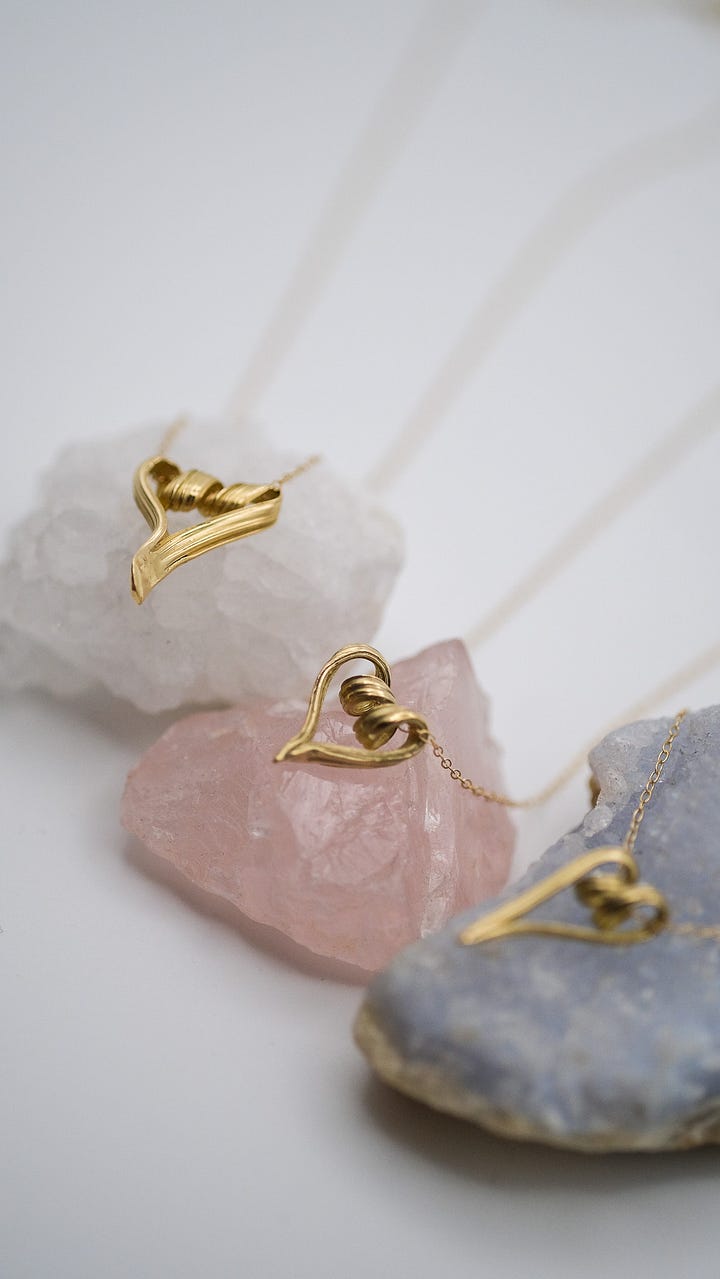
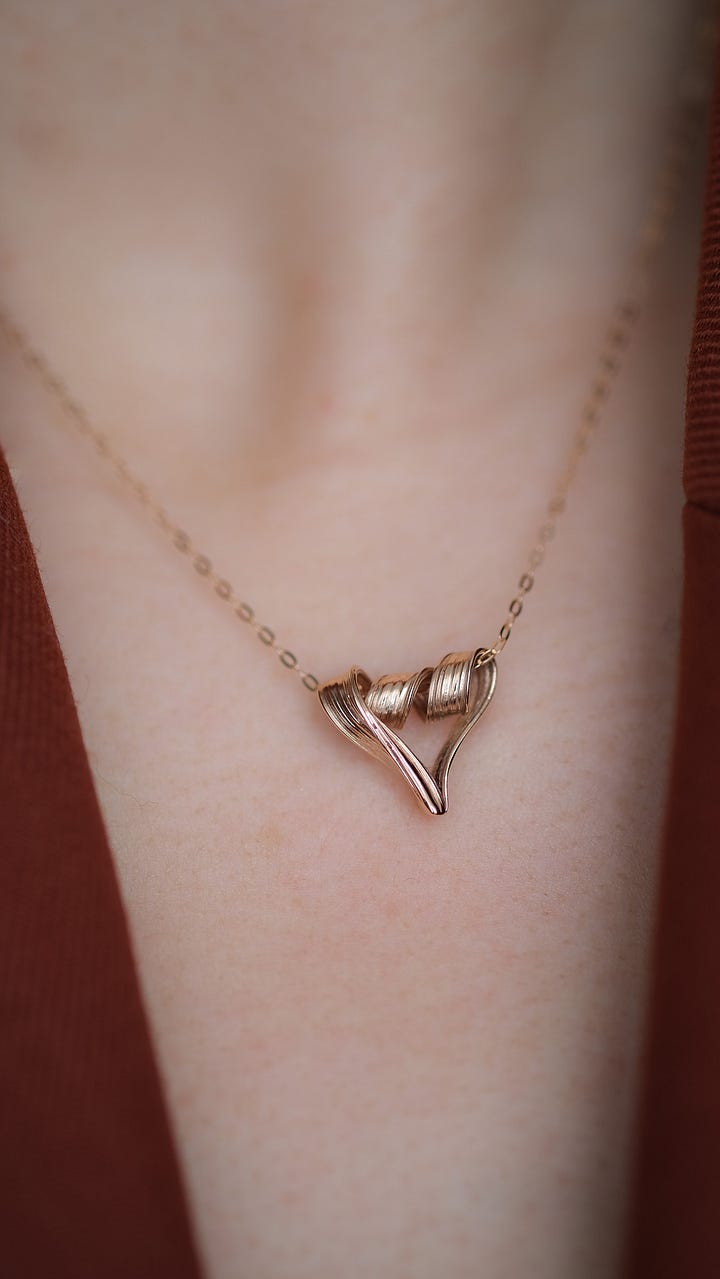
The looping heart necklace design is the first piece I worked on when I learned to make jewelry. Originally it was intended solely as a wedding gift for a friend, but I ended up loving it so much that it now anchors my collection.
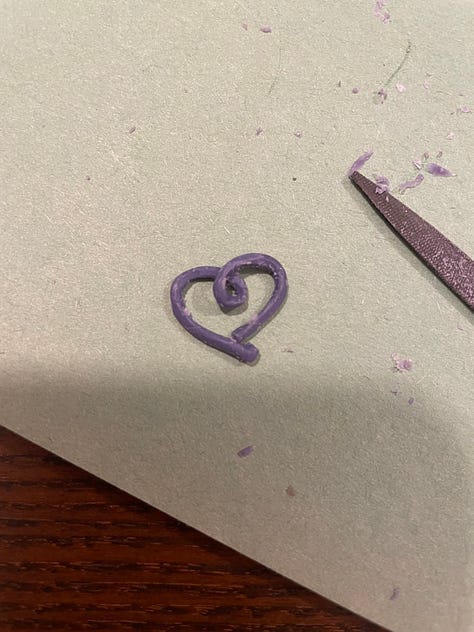


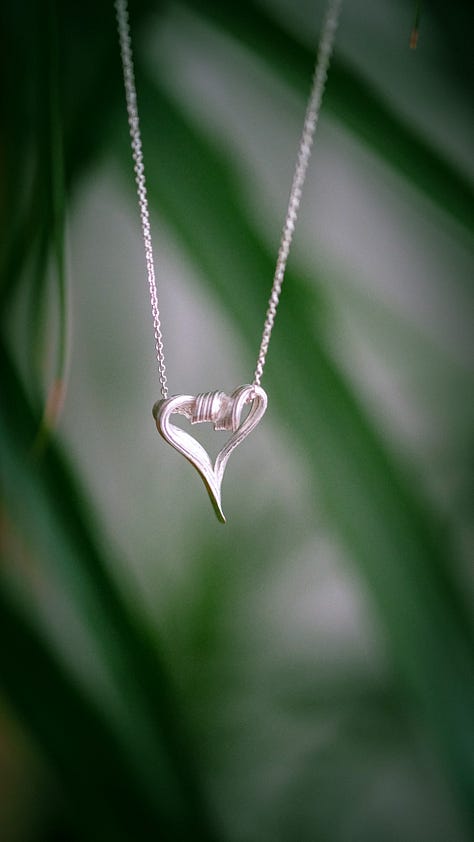
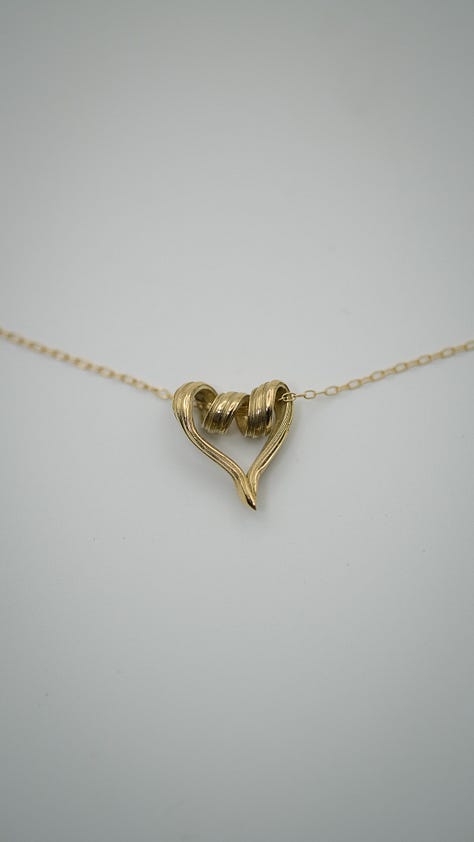

Originally, I made a simpler version with just one center loop using a soft jeweler’s wax.
I switched to using Mitsuro (traditional Japanese wax) to create a double looped heart and bring texture to the piece. I loved how the silver version came out and I couldn’t wait to cast more copies. However, after I excitedly showed my mentor the pendant, she immediately flagged that the double loop is likely too intricate for a mold (which is necessary to cast copies of a piece). She was right.
What initially felt like a disappointment ended up positive. Because I have to make a new pendant from scratch every time, no two pieces are the same.
Especially for a piece that is meant to represent openness to love, I think it’s special that each necklace is unique to the wearer.
I saw the design for the first time this week in rose gold and I have to say it is my favorite version of the necklace yet!
In the studio: works in-progress
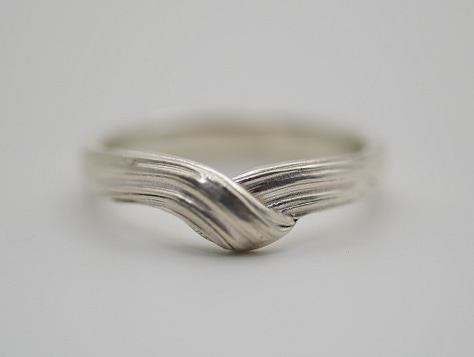
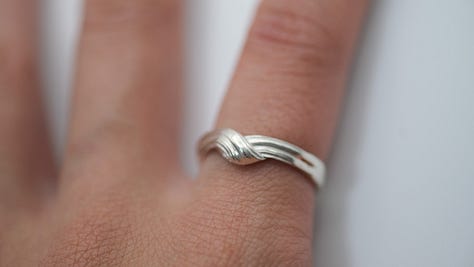

At long last, I finalized the design of a wedding band that I’ve been working on for several months.
Getting the ribboned front to transition into a smooth back was particularly difficult and involved several different techniques. I’ll share more about the process in a future write-up after I get the design cast in gold (and maybe platinum too!).

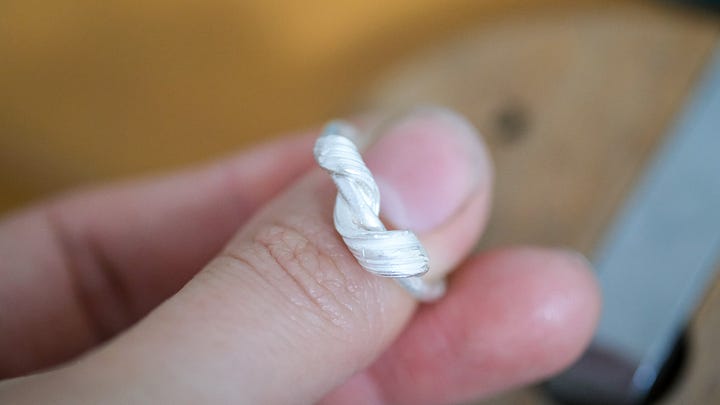
I have been wearing a silver version of a pair of large hoops that I made to make sure they are comfortable (they are!). Next step is to make them in gold.
Lastly, I had a bit of extra time one evening home alone so I played with some bits of scrap metal in my studio to make a new ring. I don’t know exactly what the final version will look like - and if it will make it anywhere beyond my own finger - but it is fun to make something from leftover pieces that otherwise wouldn’t be used.
Filing, sanding, and polishing - what’s the difference?

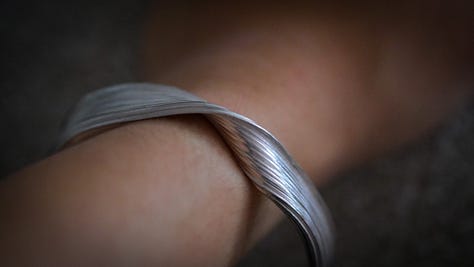

For folks interested in learning a bit about how jewelry is made, I thought I’d provide a brief overview of the differences between filing, sanding, and polishing.
Assuming the final piece will be metal, at some point the maker will need to file, sand, and polish it.
Filing uses metal files to shape and smooth the metal jewelry piece. The files remove metal burs (no one wants to be stabbed by their jewelry!) and can add decorative details on the piece.
Sanding uses sandpaper of increasing grits to smooth away file marks and increase the metal’s shine.
Polishing is the final step. The process uses extremely fine buffs and polishing compounds to bring the piece to a highly reflective, smooth finish.
While it’s possible to perform each of these steps with (a lot of) elbow grease, most modern jeweler’s use a type of rotary machine when sanding and polishing. A high rotational speed gives more friction and more easily creates a mirror finish.
What inspired me recently:
Make Something Heavy. - essay by Anu
Creative Stonesetting - book by John Cogswell
The ring below by Christopher Hentz (pictured in Creative Stonesetting and photographed by Ralph Gabriner)



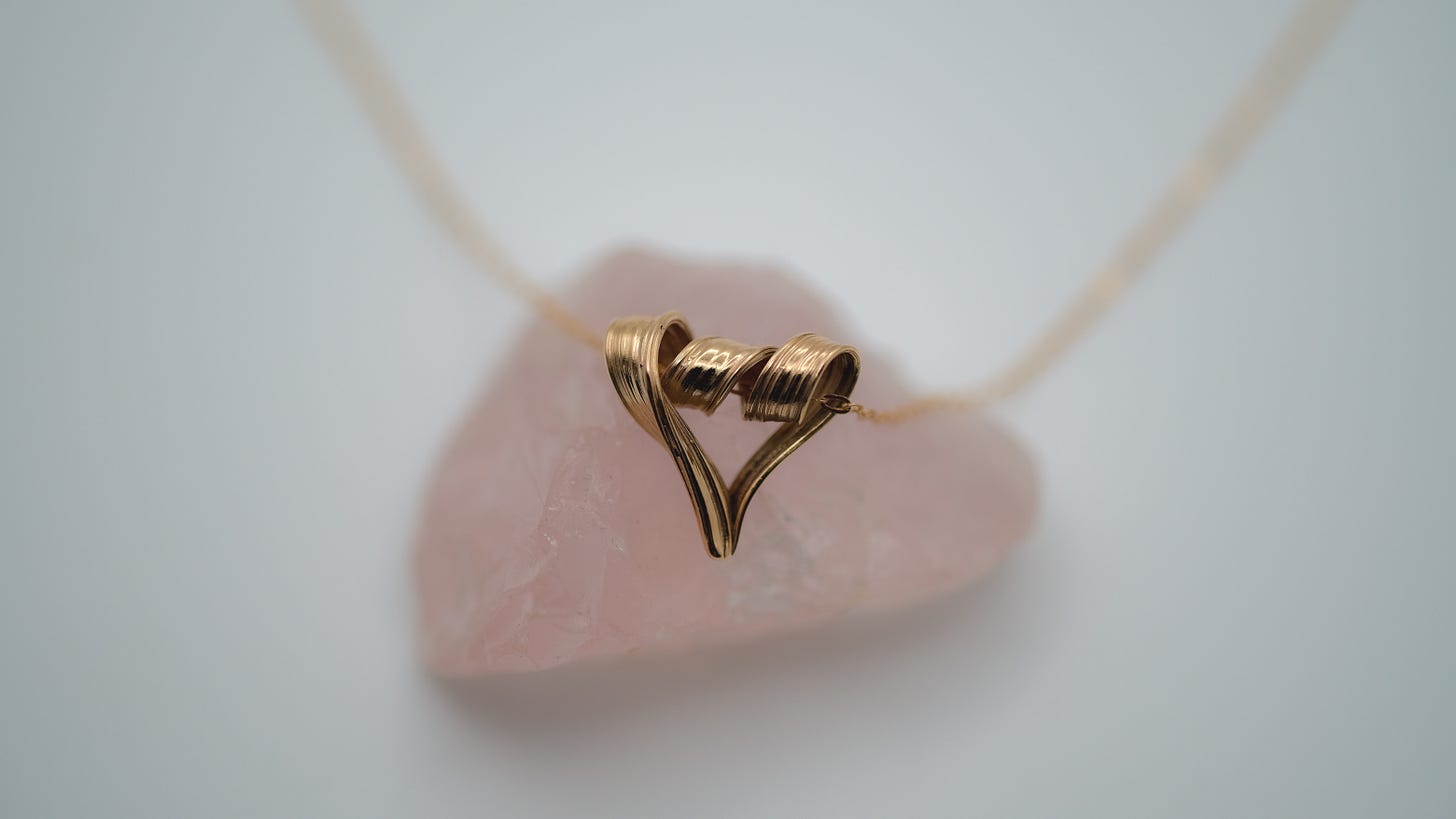
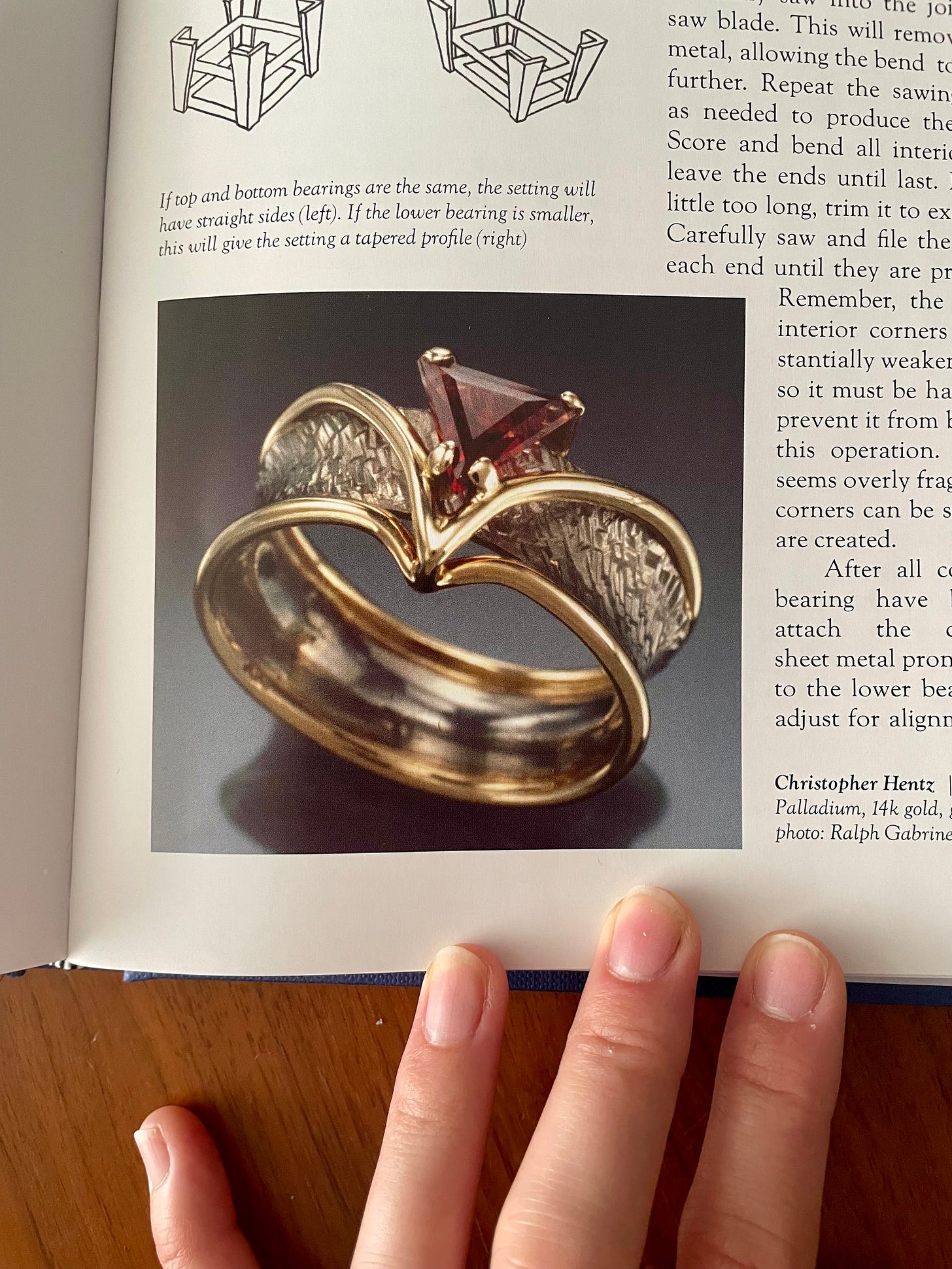
Love seeing the evolution of your work! Particularly have my eyes on those hoops 👀 I love how they really showcase the ribbon effect of Mitsuro